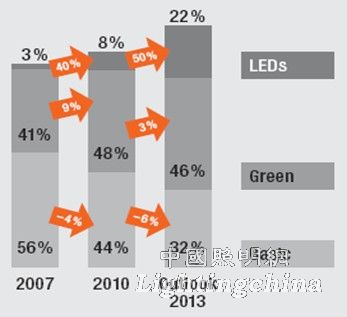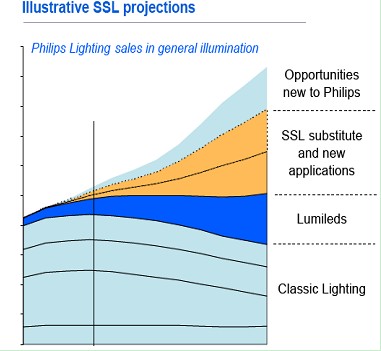Since Edison invented incandescent lamps in 1879, humans have used electrical lighting for more than a century. From the initial incandescent lamps, to the later fluorescent lamps, high-intensity gas discharge lamps, and now to LEDs and OLEDs, lighting technology has made rapid progress. Especially in recent years, the new generation of light sources represented by LEDs has emerged, bringing new opportunities and challenges to the lighting industry. In this article, we will review the history of the development of electric light sources, hoping to stand on the shoulders of history and explore the future direction of the lighting industry.
First, lighting is an eternal sunshine industry
Since its inception, human beings have had natural needs and desires for light. No matter how far the society develops, people's demand for light has always existed. Therefore, it can be said that the lighting industry is an eternal sunshine industry. The invention of incandescent lamps is a milestone in the history of lighting, which opened the door to electrical lighting. Subsequently, the continuous emergence of fluorescent lamps and high-intensity discharge lamps not only satisfies people's basic needs for light, but also creates many beautiful scenes that satisfy people's pursuit of better life. In 2009, the number of light source and lighting enterprises in China reached more than 10,000, with an output value of 250 billion yuan. In the same year, the global output value of this field was 160 billion U.S. dollars, and China’s exports were 14.1 billion U.S. dollars, accounting for less than 10%. With the continuous development of semiconductor technology, solid-state light-emitting devices have gradually entered the field of vision as a new generation of light sources, and set off a revolution in the lighting industry. The new LED light source has been favored by more and more people because of its high efficiency and long life. At the same time, it has also led to a discussion of lighting: Where will the future lighting industry go?
Second, the global discussion of light source research and development direction
1. Current status and development trends of the European light source market
Table 1 shows the statistics of sales in the European market in 2007. As can be seen from the table, the annual sales volume of incandescent lamps is 1.9 billion, which accounts for almost half of all light source sales. By 2009, the annual sales of incandescent lamps reached 2.5 billion. Although incandescent lamps are very large in number, the main sources of artificial light are fluorescent lamps and gas discharge lamps. This is because incandescent lamps are less efficient. As of 2009, LED lighting products have not really entered the lighting market.
Table 1 European light source sales in 2007
Light source classification | Annual sales (million) | Life (hours) | Power (watt) |
Incandescent lamp | 1900 | 1000 | 60 |
Halogen lamp | 480 | 2000 | 35 |
Fluorescent lamp | 470 | 12000 | 36 |
Integrated energy saving lamp | 330 | 6000-15000 | 11 |
Non-integrated energy saving lamp | 120 | 12000 | 13 |
High intensity discharge lamp | 58 | 20000 | 200 |
As LEDs gradually enter the lighting market, the traditional light source dominates the world. LED light sources have long life and high efficiency, and have begun to gradually replace traditional light sources in some fields, especially incandescent lamps. Incandescent lamps have low efficiency and high energy consumption, and the large number of incandescent lamps can adversely affect the environment. Therefore, Europe and the United States have legislated to begin phase out incandescent lamps. Figure 1 shows Osram's forecast of the development of the lighting industry in the next few years. It is not difficult to see from the figure that as of 2013, the total proportion of traditional light sources in lighting products will drop from 56% in 2007 to 32%; and LED products will increase from 3% in 2007 to 22%.

Figure 1 Osram's forecast of the development of the lighting industry in the next few years
Figure 2 shows Philips' predictions about the future of the lighting industry. According to analysis, from now to 2020, the European light source market will grow at a rate of 6% per year, and it is estimated that LED light sources will account for about one-third of the total market share in 2020.

Figure 2 Philips' forecast of future lighting industry development
2. China's forecast and planning for the development of the lighting industry
According to forecasts and plans, the output value of China's lighting industry will reach 500 billion yuan in 2015, exports will reach 25 billion US dollars, and export sales will reach 30% of the total output value. By 2015 and 2020, the energy-saving light sources of China's lighting industry will reach 70% and 90% respectively, and currently it is 50%. It is expected that the lighting industry will continue to be dominated by traditional light sources in the next 5-10 years. By 2015, the adoption rate and pass rate of the lighting industry will reach 80%. The concentration of the lighting industry has increased significantly. By 2015, the output of the top 20 energy-saving lamps will increase from 60% of the total output to 80%, and will rise to 90% in 2020. Companies with tens of billions of sales will have 3-5 in 2015 and 10 in 2020. Product structure adjustment, incandescent lamp production will be reduced to 50% of existing production in 2015, while the energy-saving tradition and LED light source, as well as the proportion of supporting electronic and electrical control devices will increase significantly. China's development policy is to encourage mergers, restructure and expand the scale, strengthen the construction of independent brands, and transfer industries to the central and western regions, while paying more attention to environmental protection, promoting low-mercury or mercury-free processes, and comprehensively carrying out recycling projects for waste light sources. CDM and LED light source are listed as priority development of new products, including LED electrical products that match the LED, making it both functional and decorative, especially in terms of cost-effective improvement.